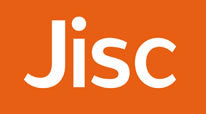Displaying 21–38
of 38 results | View 20
50
100
per page
-
Web Page
This case study explains how the University of Sheffield has undertaken a detailed estimate of the energy/carbon footprint of its ICT estate.
Tags:
university | ICT | jisc | electricity | Sheffield
-
Word Document
This case study explores how the Wheeltop Project of Beaumont College uses ICT to support the learning and development of physically disabled students.
Tags:
students | inclusion | disabled | commuication | technolgy
-
Web Page
By investing in low energy PC and server systems, the research team has lowered the environmental impacts of their computational-intensive modelling
Tags:
research | Sheffield
-
PDF
A case study from SUSTEIT about free cooling, avoidance of hot/cold air arrangements, and variable speed drives, which can save in energy costs, compared to older, unoptimised,...
Tags:
energy | ICT | cooling | computing
-
Web Page
Purpose-built to house the School of Computing, a simple, low energy design, which saves energy, reduces environmental impacts and enhances productivity
Tags:
it | building | Dundee
-
Word Document
At the University of Liverpool, the self-developed software powers down around 3,500 participating computers that are idle for over 10 hours daily, bringing numerous benefits.
Tags:
efficiency | ICT | it | power | computers | software
-
Web Page
Case study of the University of Gloucestershire realizing that computer and printer procurement and usage was a significant contributor to the university’s environmental...
Tags:
ICT | computer | printer
-
Word Document
When City of Bristol College encountered a growing number of servers with the related power and cooling requirements, it looked at virtualisation mainly for server...
Tags:
college | case study | resource efficiency and waste | development | Operational | estates operations | Utilities | Sustainable ICT | it | virtualisation
-
Word Document
This case study introduces "HECToR" (High End Computing Terascale Resources)
Tags:
Edinburgh | data | jisc | cooling | HECToR
-
Web Page
This case study explains how Jisc were able to provide Cardiff University with new technology allowing twice as many servers in less space and the total cost.
Tags:
university | data | cooling | centre | Cardiff | Energy Efficient
-
Web Page
A case study, from Cardiff University, explaining how using Condor could help cut your electricity use.
Tags:
energy | university | computing | efficient | Cardiff | Grid
-
Word Document
In the Queen Margaret University campus a key feature is thin client IT infrastructure, which produces less heat and allows the building to be mostly naturally lit and ventilated.
Tags:
estates | it | ventilation | thinclient
-
Word Document
Replacing 120 physical servers with 13 VMware ESX host servers has enabled Sheffield Hallam University to expand server capacity considerably, while reducing energy costs and...
Tags:
case study | higher education institution | resource efficiency and waste | Operational | estates operations | Utilities | Sustainable ICT | it | england | operating system
-
Web Page
The Suste IT Tool is a simple carbon accounting tool that calculates the amount of energy (kWh), carbon (CO2) and money (£) is spent on ICT related energy use.
Tags:
carbon | ICT | suste
-
PDF
Sustainable ICT in Further and Higher Education, a JISC report, provides useful information on good practice in environmentally sustainable ICT
Tags:
jisc | act | 2008 | FAQ
-
PDF
ICT briefing by JISC for the senior management team in November 2011, elaborating on the ways available for institutions to use ICT to go green, employing a couple of case studies
Tags:
ICT | briefing
-
Web Page
This report on sustainable ICT, produced for the Joint Information Services Committee (JISC) was by Professor Peter James and Lisa Hopkinson at the University of Bradford.
Tag:
ICT
-
Web Page
Most colleges and universities have some sort of data centre. Ever-increasing data storage and processing needs mean that the energy needed to run the computers and to deal with...
Tags:
higher education institution | environment | energy efficiency | retrofit | electricity | cost reduction | engineering | Further Education Institution | data centre | information technology | comsumption






 Except where otherwise stated, content on this site is
licensed under a Creative Commons Attribution 3.0 License.
Except where otherwise stated, content on this site is
licensed under a Creative Commons Attribution 3.0 License.
